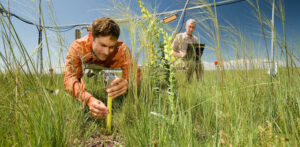Evaluating Freeze Damage in Tree Fruit: The subfreezing temperatures on the morning of April 18 may have caused some natural thinning across the state. Any physiological damage that is not visible now will appear as the season progresses. A helpful guide for evaluating fruit damage can be found in the Intermountain Tree Fruit Production Guide.
Tree Fruit Phenology: Tree Fruit Phenology remains advanced, but development is slowing. In southern counties all peach orchards are mid to late bloom. Redhaven was at approximately full bloom on April 6, and was at Petal Fall by April 14. Plums are past shuck fall. Pears are full to late bloom. Red Delicious is just past 50% bloom. Sweet cherries are at about 50% bloom. [Read more…]

